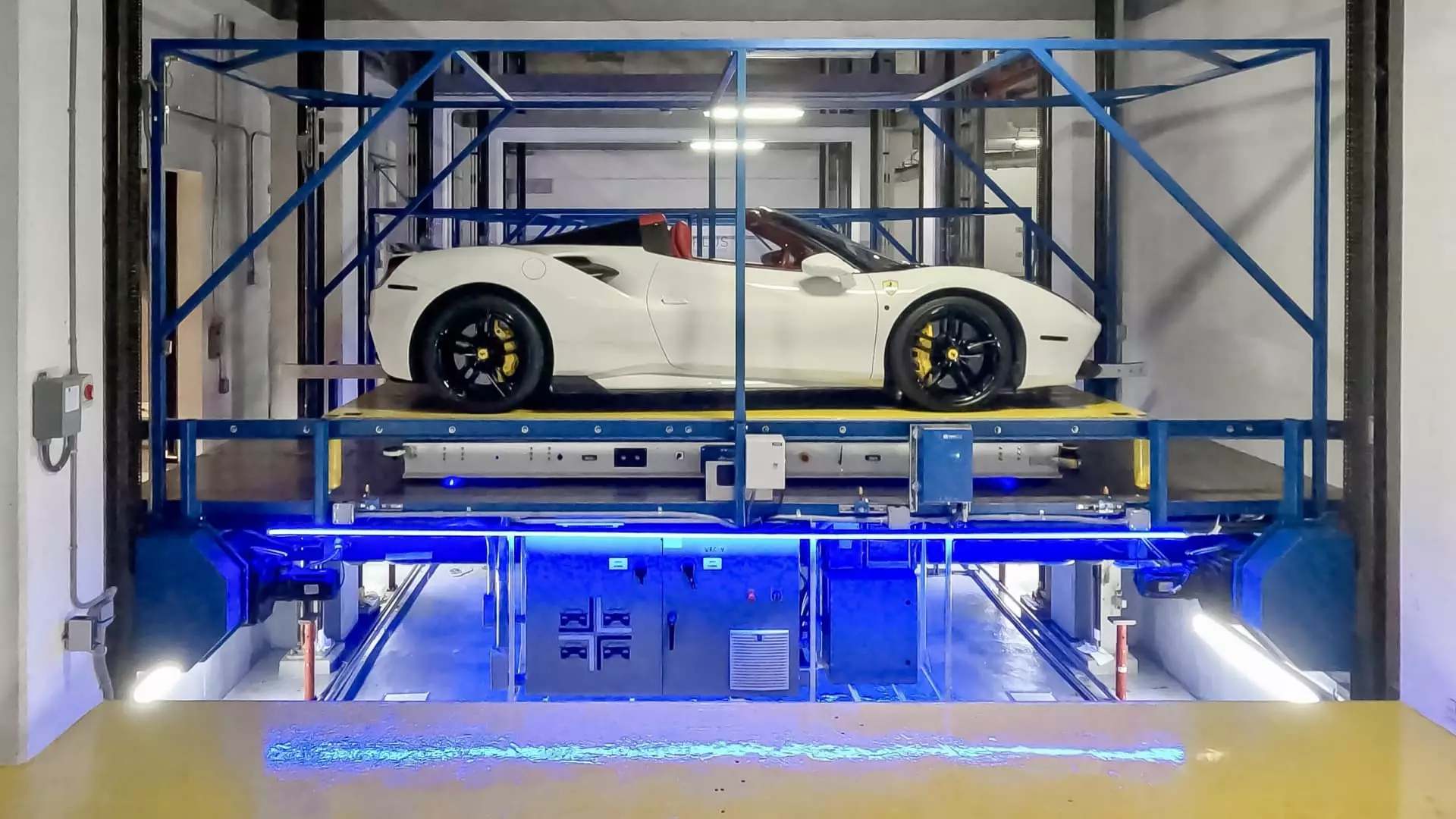In an age characterized by rapid technological advancement, the integration of automation in everyday aspects of life is becoming increasingly prevalent. A striking example of this innovation can be found within the luxury confines of Brickell House, a 46-story condominium building in Miami, where a large-scale automated parking garage operates seamlessly, providing a glimpse into the future of urban living. This sophisticated system operates around the clock, offering residents convenience while maximizing space in densely populated environments.
Brickell House is not just a residential complex; it represents a paradigm shift in how urban living is envisioned. Within its walls lies a cavernous, 13-level parking garage managed by a fleet of 29 robots known as Automated Guidance Vehicles (AGVs). These robots navigate the garage using advanced lasers and barcodes strategically placed on the floor, ensuring efficient parking and retrieval of vehicles. This ambitious project showcases the potential of automated systems to redefine not just the way we park but also how we perceive residential amenities.
Unlike conventional garages that could lead to tedious searches for parking, residents at Brickell House simply drop off their vehicles at designated bays, allowing robots to take over from there. This not only saves time but also elevates the living experience, making it akin to turning a car over to a valet without any human intervention.
The Necessity for Smart Parking Systems
As real estate markets across cities like New York and San Francisco evolve, the demand for innovative parking solutions has surged. In fact, parking spaces in luxury condos have reached staggering prices; insider reports reveal that spaces in Manhattan condos can be listed for as much as $300,000. In the case of Brickell House, the asking price for a penthouse includes five coveted parking spots, exemplifying how these automated systems have become an integral part of luxury living.
According to market research, the global smart parking sector was valued at $6.5 billion in 2021 and is expected to witness unprecedented growth, reaching over $30 billion by 2030. This surge can be attributed to the increasing integration of automated systems within high-density urban developments. As demand continues to climb, developers are compelled to invest in these advanced systems to remain competitive.
The construction of automated parking garages injects an innovative spirit into urban architecture, optimizing space and increasing efficiency. AGVs are equipped to maneuver seamlessly between levels and parking spaces, effectively reducing the area needed for traditional ramps and lanes. They can park vehicles with an accuracy of just two inches apart, which is significantly more efficient than human drivers managing the same task.
The control and precision facilitated by AGVs streamline the parking process by dividing tasks among multiple robots, further reducing wait times for residents. Enhanced reliability through rigorous testing ensures that such systems operate smoothly under real-world conditions, giving developers and residents alike confidence in their adoption.
Challenges and Lessons Learned
As with any emerging technology, there are challenges that come along with automated parking. A notable incident in the past involved issues with an earlier parking system at Brickell House itself, highlighting how crucial reliability is in automated setups. Such experiences have pushed industry leaders to innovate continuously, overcoming shortcomings and building systems that fortify user trust.
However, all is not rosy in the world of automated systems. High-profile lawsuits regarding malfunctioning lifts, such as the case involving tech mogul Palmer Luckey, serve as reminders of the consequences of automation gone awry. Luckey’s experience of being trapped in his garage underscores the need for robust safety measures and thorough testing protocols.
The Future of Urban Living: What Lies Ahead?
As urban centers become increasingly congested, the role of automated parking is poised to expand. The growing trend towards smart parking solutions indicates a strong future where technology not only solves logistical parking issues but also enhances the living experience.
With developers now recognizing that automated parking systems can free up real estate for residential purposes, one can foresee a profound shift in urban infrastructure. As projects like Brickell House showcase the benefits of integrating technology and luxury living, the need for innovation in parking will likely continue to flourish. Ultimately, the evolution of automated parking is not merely a fashionable trend; it is a fundamental transformation that symbolizes the future of urban planning and living.
The marriage of technology and urban living, as exemplified by Brickell House, is merely the beginning of a broader revolution. As we refine these systems and learn from past hurdles, there lies immense potential for cities worldwide to embrace a new era of efficiency, convenience, and ultimately, a more harmonious urban existence.

